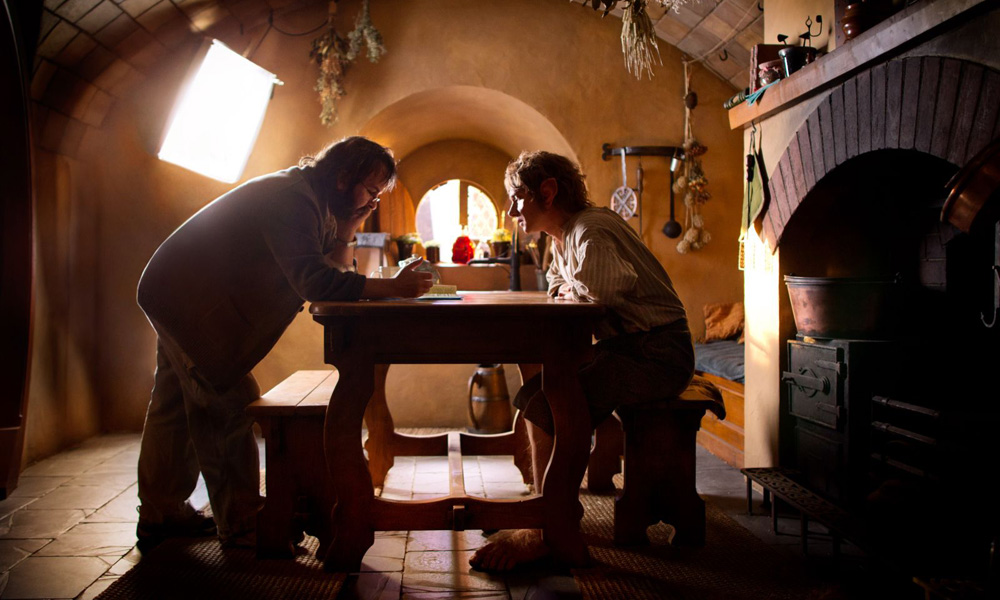
A Hobbit’s Take on Trying Something Controversial
The new Peter Jackson movie The Hobbit: An Unexpected Journey, released on Friday, uses some new technology that audiences and critics have found jarring. Was the risk worth it, and what lessons does it teach?
The challenge of keeping ahead of the curve is that sometimes, your audiences aren’t quite ready for change. Or sometimes they’re ahead of you already.
That appears to be the challenge facing the new Hobbit trilogy, the first edition of which (The Hobbit: An Unexpected Journey) hits theaters this weekend.
The film has big expectations to live up to, but its unusual technology is the thing that really has people talking. Was it worth the risk?
Part of the problem? The technology curve is rising, and consumers are often getting their hands on it first.
The Controversy, In a Nutshell
The technology in question: For months, director Peter Jackson has been describing his excitement about the idea of filming his three Hobbit movies in 48 frames per second. At twice the frame-speed of traditional film, it helps cut back on some of the weaknesses created by camera-panning—and according to Jackson, enhances the films 3-D effects. “Actually, the 48 makes it easier to watch, and it’s almost like at 24 frames, 3-D didn’t really quite reach its potential,” he told The Huffington Post. “Because of the strobing and the fact that each eye is getting a different strobe. But, you go to 48, and suddenly it feels like the two are made for each other. It almost feels like that completes that technical puzzle.”
The reviews. Oh, the reviews: Since an embargo ended on early reviews of The Hobbit: An Unexpected Journey, critics have been far from kind to the sped-up format. “More disconcerting is the introduction of the film’s 48-frames-per-second digital cinematography, which solves the inherent stuttering effect of celluloid that occurs whenever a camera pans or horizontal movement crosses the frame—but at too great a cost,” writes Variety‘s Peter DeBruge. “Consequently, everything takes on an overblown, artificial quality in which the phoniness of the sets and costumes becomes obvious, while well-lit areas bleed into their surroundings, like watching a high-end homemovie.” BuzzFeed’s Donna Dickens, meanwhile, chides how low-rent the camera speed makes the scenery look. “Words cannot state how much this draws one out of the film,” she says.
The challenges of keeping up: Part of the problem? The technology curve is rising, and consumers are often getting their hands on it first. The high-frame-rate situation is no exception: For movies, it’s a new approach, but as Bloomberg Businessweek notes, there are options on the consumer market that outpace the traditional 24 frames per second that most films use. One of them is the iPhone, which shoots 30-frame-per-second video. Another is the GoPro video camera, which allows you to shoot 60 frame-per-second video—faster than The Hobbit—at a cost of $399. “If the excellence of what you or I create rivals that of pros, our demand for their wizardry starts to slip,” writes the magazine’s Ben Kunz. While you may not necessarily get together the effects wizardry to match Jackson’s vision, you can match the look of his film a little more easily.
Taking Big Chances
The other day, I pointed out a Seth Godin blog post in which he said: “Go fail. And then fail again. Nonprofit failure is too rare, which means that nonprofit innovation is too rare as well. Innovators understand that their job is to fail, repeatedly, until they don’t.”
This sounds a lot like what Jackson did here. Before he became known for his undertakings in converting J.R.R. Tolkien’s work to film, he spent years as an innovative, outside-the-box director, building a name for himself with clever horror films and acclaimed dramas such as Heavenly Creatures.
With the new Hobbit series—which, by the way, has engendered controversy in other ways—Jackson appears to be attempting to innovate with the benefit of a major studio behind him. And when the stakes are that high, this sort of innovation gets to be challenging.
When you become established in your field, as Jackson is, how do you keep the innovation coming? And how do you manage risk? Let us know in the comments.
("The Hobbit" director Peter Jackson with star Martin Freeman. Photo: New Line Cinema)






Comments